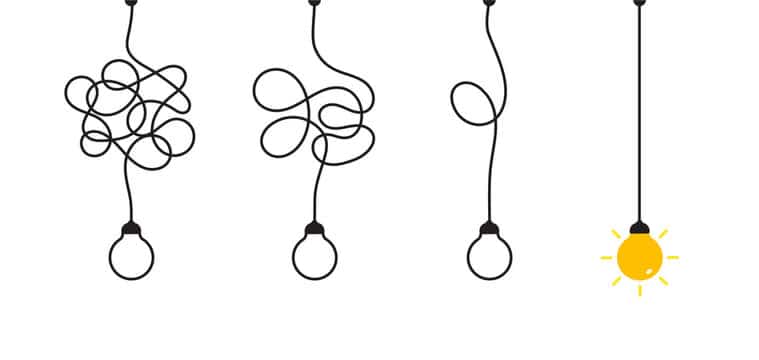Less is often more
From NumLock News, a daily newsletter that I read and adore:
A new study published in Nature found that when subjects were set to the task of trying to fix something, they favored adding stuff rather than removing things to try to get it to work the right way.
When asked to fix a travel itinerary, just 28 percent removed something.
When asked to improve an essay, word counts shrank in only 17 percent of edits.
When asked to make a pattern out of squares, just 20 percent removed squares to create a pattern.
When asked how to improve a university, just 11 percent wanted to drop something.
When consulting with clients about productivity and efficiency, I find this to be entirely true. So many individuals and organizations attempt to solve a problem by creating a form, establishing a new procedure, developing a new sequence, or outlining a new list of rules or regulations. This often leads to frustration, wasted time, squandered energy, and less meaningful work.
Also, the problem is often not entirely solved by the added work.
When I speak to fledgling writers, they often ask me about what writing programs I use, how and when I schedule my workflows, where I write, and what tools I use to help me apply words to the page.
My answer is always the same:
I need something to sit on. A chair is good, but the floor is fine, too. I once wrote a chapter while sitting under a tiny sapling in the middle of a parking lot. I also need something to record my words. My laptop is ideal, but a pen and paper or even my phone will also work in a pinch.
That’s it. I sit and write, wherever and whenever I can. I tell these writers to stop worrying about the fluff and simply write sentences. Connect them with other sentences to make paragraphs. Keep doing this until you have a book.
I suffer from this propensity for complication in my own life, too.
Years ago, a new spreadsheet and data collection tool was added to the many ways we already collect data at work. It was redundant, pointless, and time-consuming. Recognizing the needlessness of this spreadsheet, I decided to run my own pilot program entitled, “I’m not going to complete this spreadsheet – Let’s see what happens.”
For three years, I did not report the data as required. My portion of this grand spreadsheet remained blank. And for three years, no one said a thing.
Finally, a new boss checked to see if the spreadsheet was completed – not to utilize the data, mind you, but to simply follow up on a required task – and noticed I had not entered my data. When he asked why I hadn’t completed the required assignment, I explained that I hadn’t done it for three years without complaint.
He was shocked. He’s also a rule follower who would never dare to employ my frequently used “I’m not going to do it – Let’s see what happens” strategy.
I completed my portion of the spreadsheet today, but I only do so because my boss instructed me to do so. I still don’t respect a process that is entirely unnecessary (as I proved over the course of three years), but I’m never purposefully insubordinate.
Only subversive.
Similarly, there are forms I must complete at work that often ask me to indicate my “Position.” I’m supposed to enter “Teacher,” but for the past 24 years, I have entered my position as “Upright,”and no one has ever said a word.
As I suspected, the question is unnecessary and a waste of time.
Increased simplicity almost always results in increased productivity and efficiency. When you encounter a problem, your first thoughts should be:
What is fouling up the works?
What needs to be removed to correct this problem?
What presumed-to-be-correct method is not nearly so correct?
What layer of bureaucratic nonsense is making our lives miserable?
What are you still doing simply because it’s always been done this way?
What fossilized vestiage of a pervious era is no longer needed to make work happen?”
The next time you’re faced with a problem in need of correction, try removing something instead of adding to it. “Clear the field,” I often say, and you can often correct the problem, increase efficiency and productivity, and make your days far simpler.

